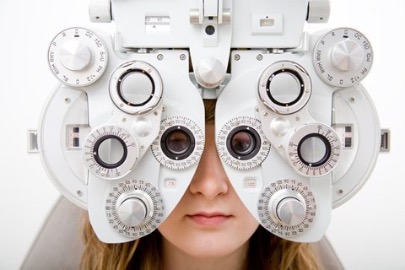This presents the change from legs to yards (20 feet means 6 meters). If you will see 6/5(very good eyesight), what this means is you can see, from 6 meters, what you will have to get to 5 yards to have the ability to see. If you have 6/60 (poor eyesight), this means you need to be 6 yards away to see what you should be in a position to see from 60 meters. There are different degrees in between.
The initial evaluate is named vision. This is a way of measuring what you will see without the support at all. For anyone who does not require cups and does not have any eye health problems, it’s generally 6/6 or a small better. As your prescription gets tougher, the second number gets higher. The utmost effective letter of the information is normally 6/60. Wanting glasses isn’t the sole reason for that quantity to be higher. When you have eye problems, you might not have a prescription but nevertheless just be able to see greater letters. That is where in fact the expression aesthetic acuity becomes important.
Your visible acuity tells people how well you can see with the perfect prescription in your glasses. When you have something amiss with your eyes such as for instance cataract or macular degeneration, then even with perfect pair of specs for you, you may only see a few of the bigger letters on the chart. Precisely how much down the information you will see with the best spectacles is your visual acuity. Therefore, when your optician informs you your eyes have transformed; before you buy a fresh pair of designer cups, you need to know, is it your prescription and/or your acuity that has changed. If it’s only a change in your prescription, that is fine. If it is a drop in your visual acuity, you will need to find out why.
The medical consultant who concentrates in the creating and installing of lenses to improve numerous vision issues that an personal might encounter is termed an optometrist. Along with doing vision examinations, an optometrist prescribes the helpful contact that correlates for the determined perspective concern. Compared, a dispensing optician focuses upon the stuffing of the prescriptions by making and/or fitting the remedial contacts or spectacles/designer sunglasses manchester.
The role of a dispensing optician is to understand the published prescription and establish the specifications of the lenses required. Their aspects of knowledge allow them to see customers of the very acceptable body, contact and also lens level following taking into account the consumers facial characteristics, life style and occupation. For consumers that visit a dispensing optician with no prescription, the utilization of a focimeter that documents spectacle dimensions, allows them to reproduce a preexisting group of glasses. Also, if use of the customer’s files can be acquired, they might be able to copy or re-make spectacles or contact lenses.
Some dispensing opticians originate the dimensions and demands needed by lab specialists that are faced with dimension and installing contacts to the frame. Furthermore, auditing the lenses when created to make sure that the lenses have already been soil and fixed to the stipulated specifications. When the consumer is able to acquire their spectacles, they may restore or fold the body so that the spectacles fit the client correctly and comfortably. The restoration and refitting of broken or damaged structures and lenses can be a standard task. Their understanding and expertise provide useful customer data and instructions with regard to the proper preservation, treatment and utilization of the corrective lenses.
